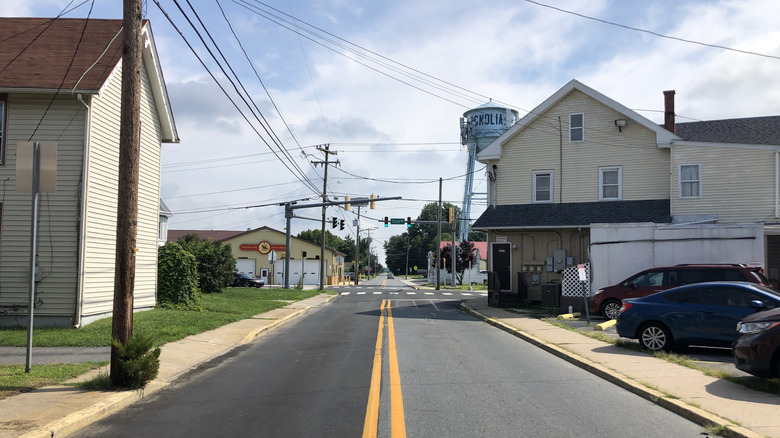A Unique Town in Delaware
Delaware is a small state, but it offers a wealth of experiences within its compact size. Travelers can explore the entire state in just one day along a scenic trail that winds through its landscapes. From the beautiful Delaware islands with their coastal views to the historic small towns scattered throughout the countryside, there’s something for everyone. One such town is Magnolia, which has been called one of the state’s “most eccentric towns” due to its unique shape and character.
The Center of the Universe
Magnolia is a circular town with a population that has remained under 300 for years. Despite its small size, the town boasts a bold sign that reads: “This is Magnolia, the center of the universe around which the Earth revolves.” While this may sound dramatic, it perfectly captures the town’s whimsical spirit. As you walk from one end of Main Street to the other, you’ll encounter a church dating back to the 1850s, a Victorian-style mansion, a Quaker cemetery with a significant abolitionist’s grave, and a cozy restaurant that receives rave reviews.
Just north of Magnolia’s official border, there’s a public boat ramp on the Saint Jones River surrounded by peaceful marshland ideal for fishing. Whether you’re looking for history, nature, or a charming place to eat, Magnolia has it all.
A Brief History of Magnolia
Magnolia is located just south of Dover, Delaware’s capital city, which is about a 12-minute drive away. For those arriving by air, the town is approximately a 45-minute drive from the Wilmington Regional Airport or just over an hour from Philadelphia International Airport. As you approach the town, you’ll cross tributaries of the Saint Jones River before arriving in Magnolia.
According to local legend, Magnolia was deliberately founded about a mile from the river to provide access without the nuisance of mosquitoes. The town was also intentionally designed in a circular shape with a half-mile diameter to symbolize brotherhood. This distinctive layout has remained unchanged since the town was chartered in 1885, despite modern development pressures.
The name “Magnolia” comes from the magnolia tree, which was a favorite of the Duke of York, who once owned the land. Another significant chapter in the town’s history is its Quaker heritage. The Quakers established a meeting house in the early 1700s, long before the town was officially incorporated. Although the meeting house was later abandoned when the Quakers moved to Camden, they left behind a burial ground known as the Murderkill/Motherkiln Friends Burial Ground. This site, located just north of the town’s official boundary, is where Warner Mifflin, a key figure in the fight against slavery in Delaware, is buried.
Historic Homes and a Beloved Restaurant
Walking through Magnolia, you’ll find sidewalks lining the main streets, leading past beautifully preserved homes. One of these is the Matthew Lowber House, a Quaker landmark built in 1774. It was the only home in the area until 1845, and its history includes a notable event in 1980 when the entire structure was moved about 100 yards to preserve it.
Another impressive home is the Victorian-style John B. Lindale House, built in the early 1900s and once the residence of one of Delaware’s last peach barons. The famous “center of the universe” sign stands in front of this house, adding to the town’s charm.
After exploring the historic sites, make sure to visit the Magnolia Restaurant, a local favorite located at the heart of the town. With four stars on TripAdvisor and 4.4 stars on Google, the restaurant serves breakfast, lunch, and dinner with menus reminiscent of classic American diners. One reviewer described it as “a cut above a diner with quality ingredients.”
Whether you’re seeking history, nature, or a delightful meal, Magnolia offers a unique experience that is worth discovering.



